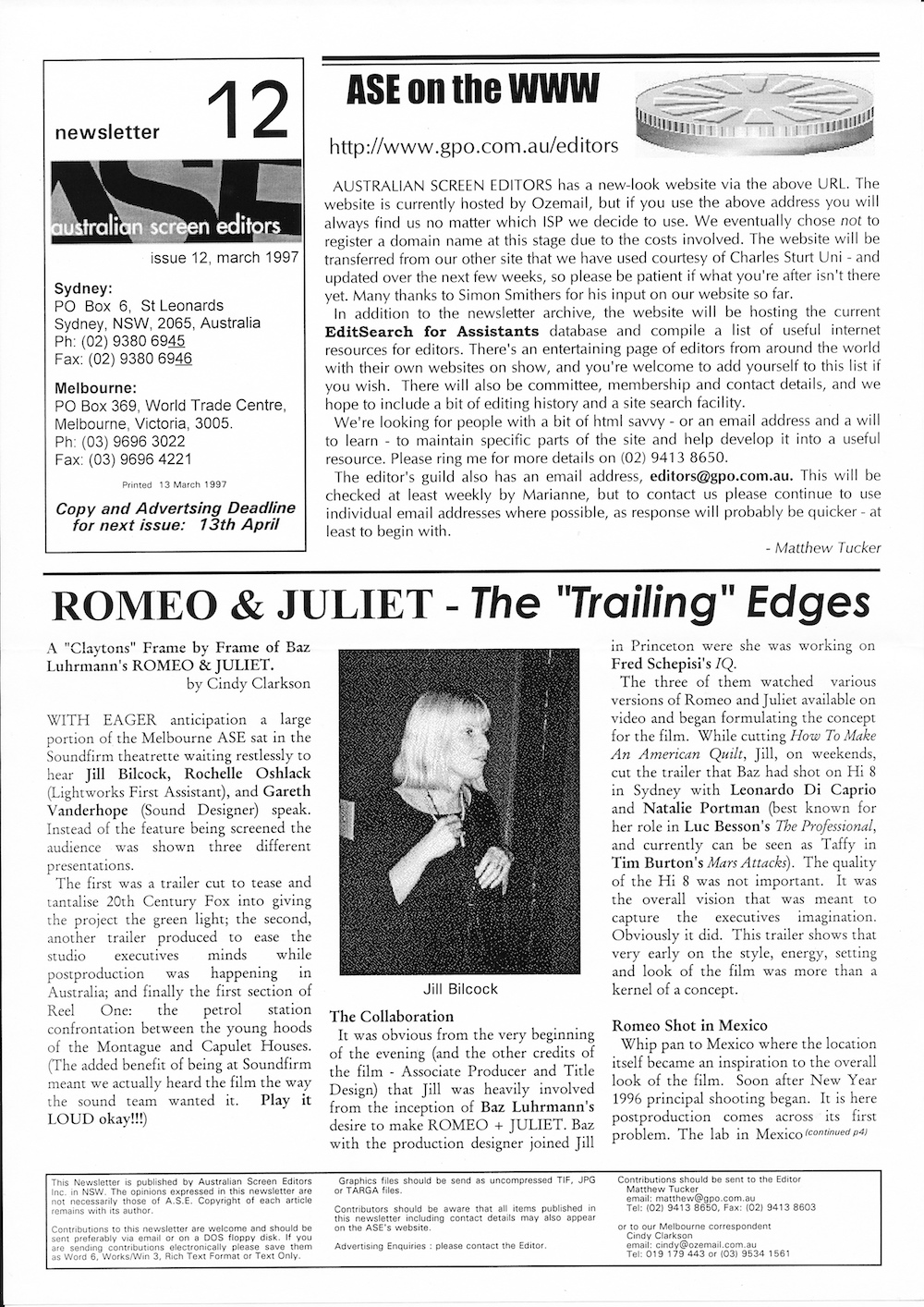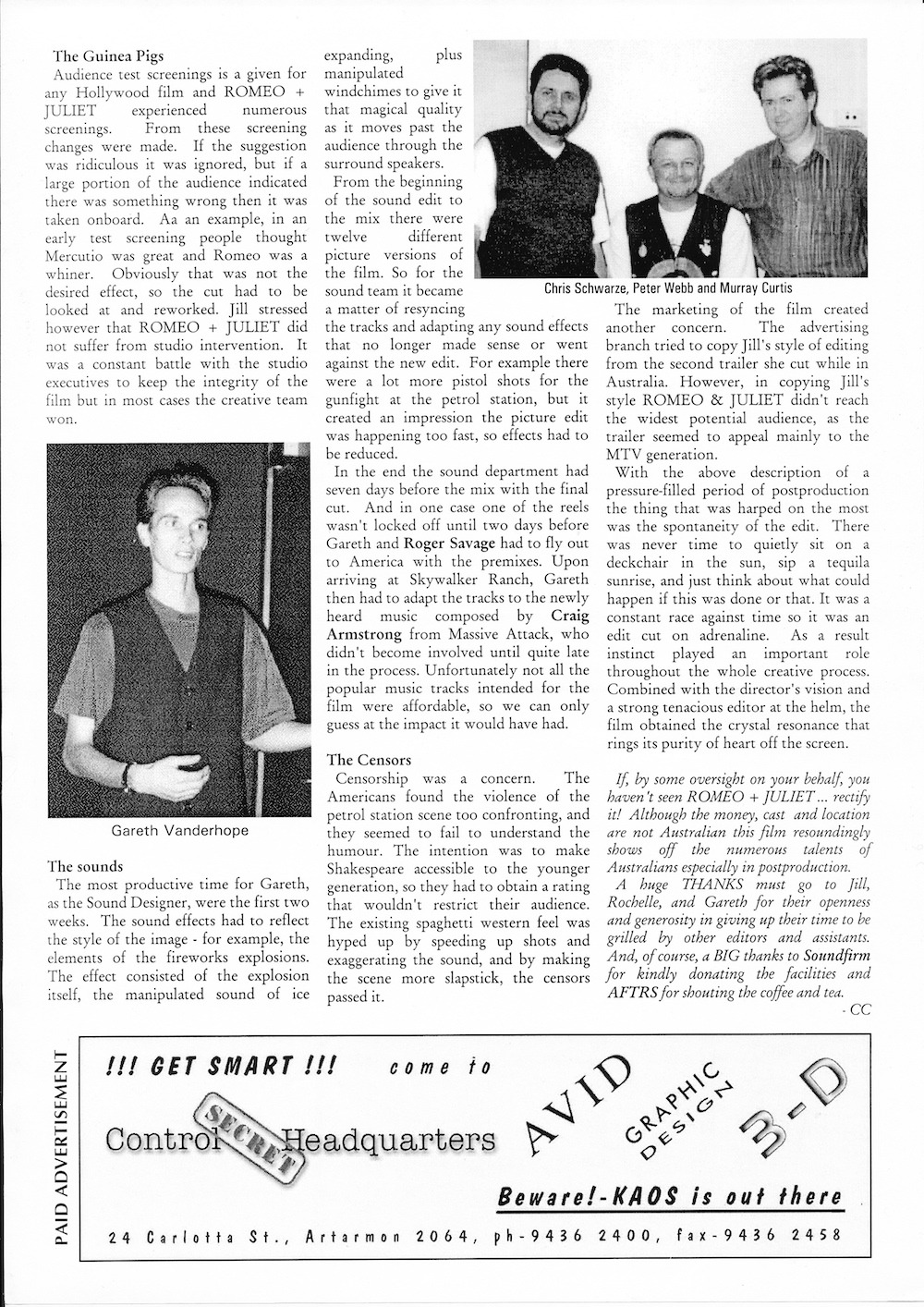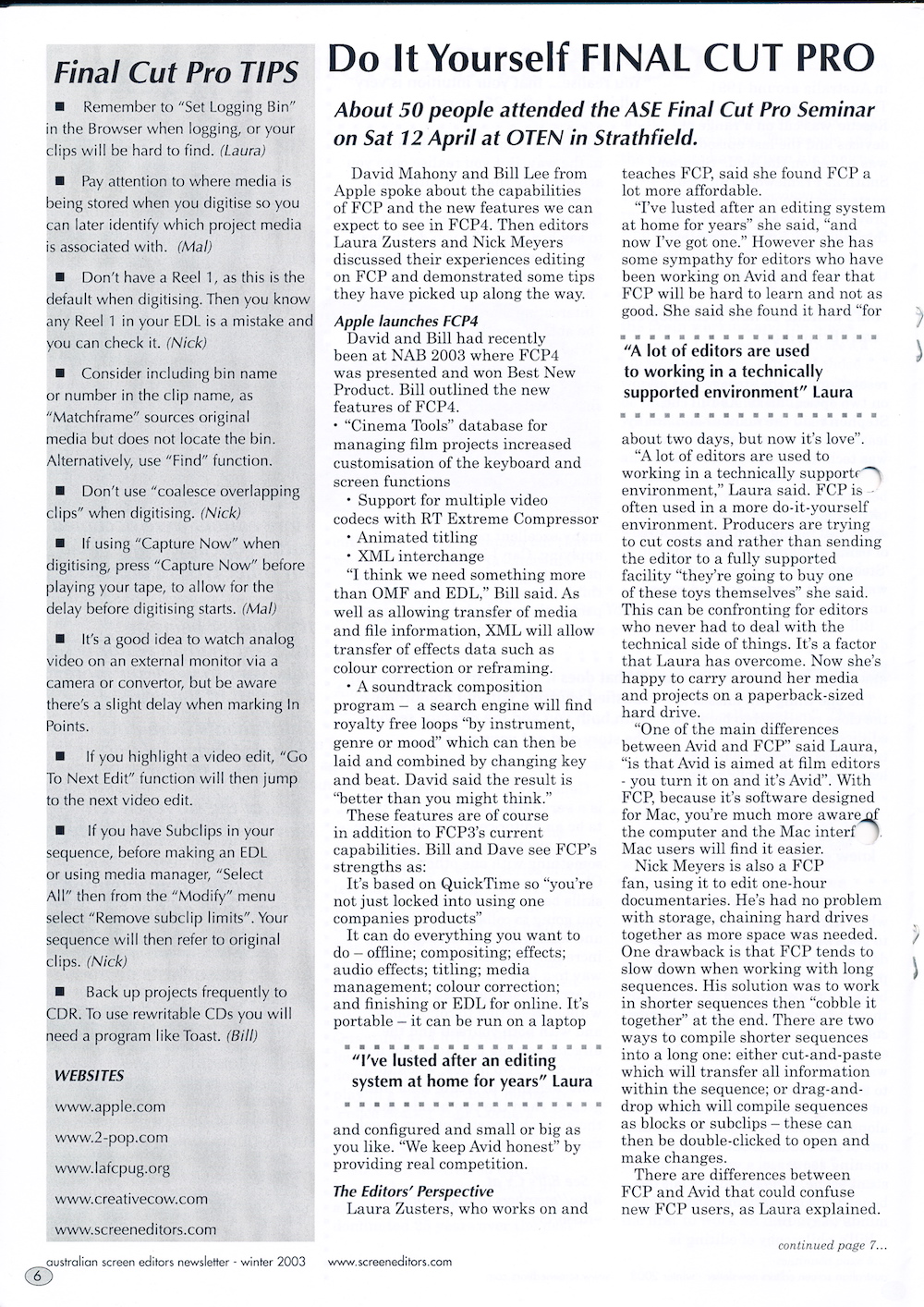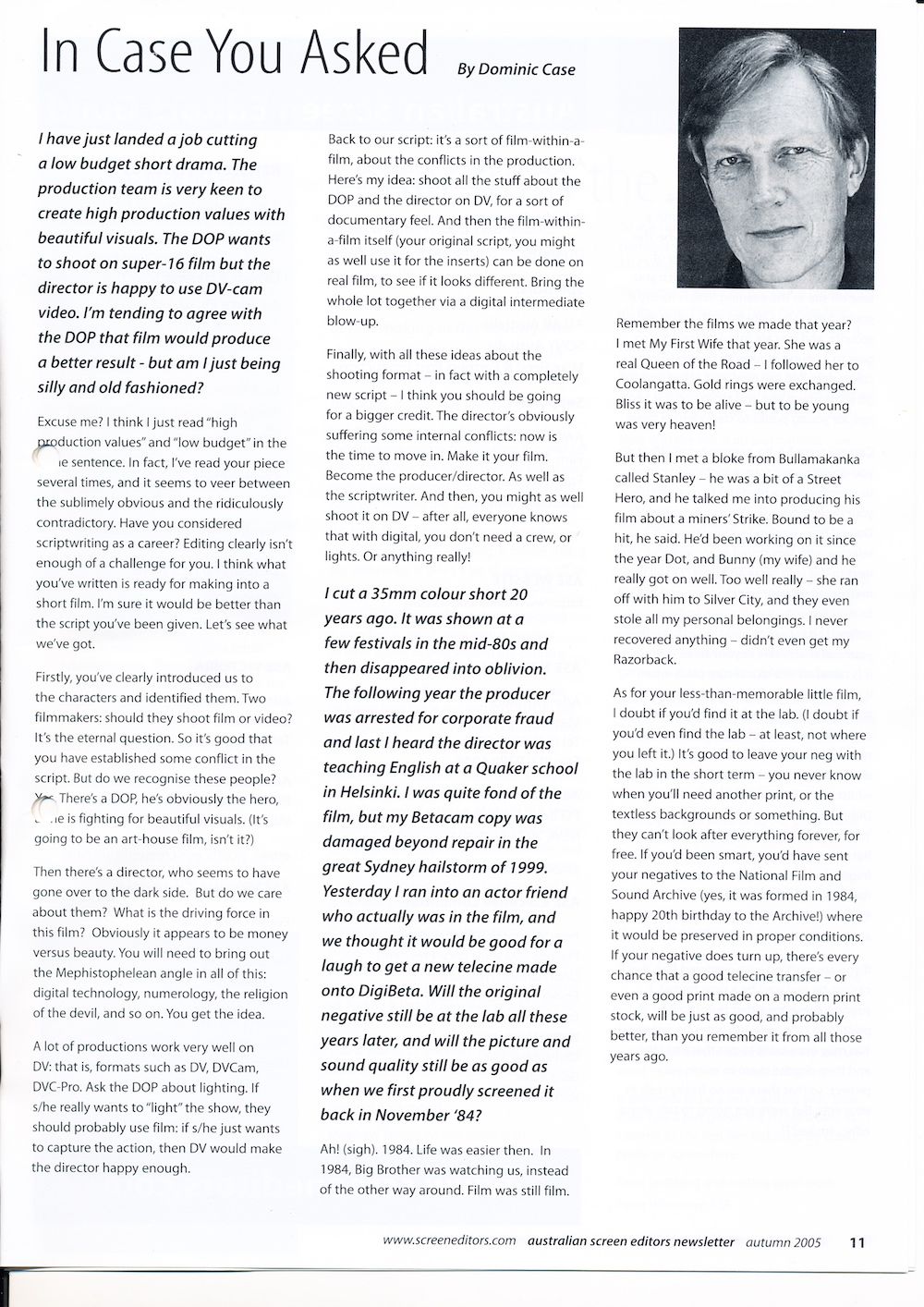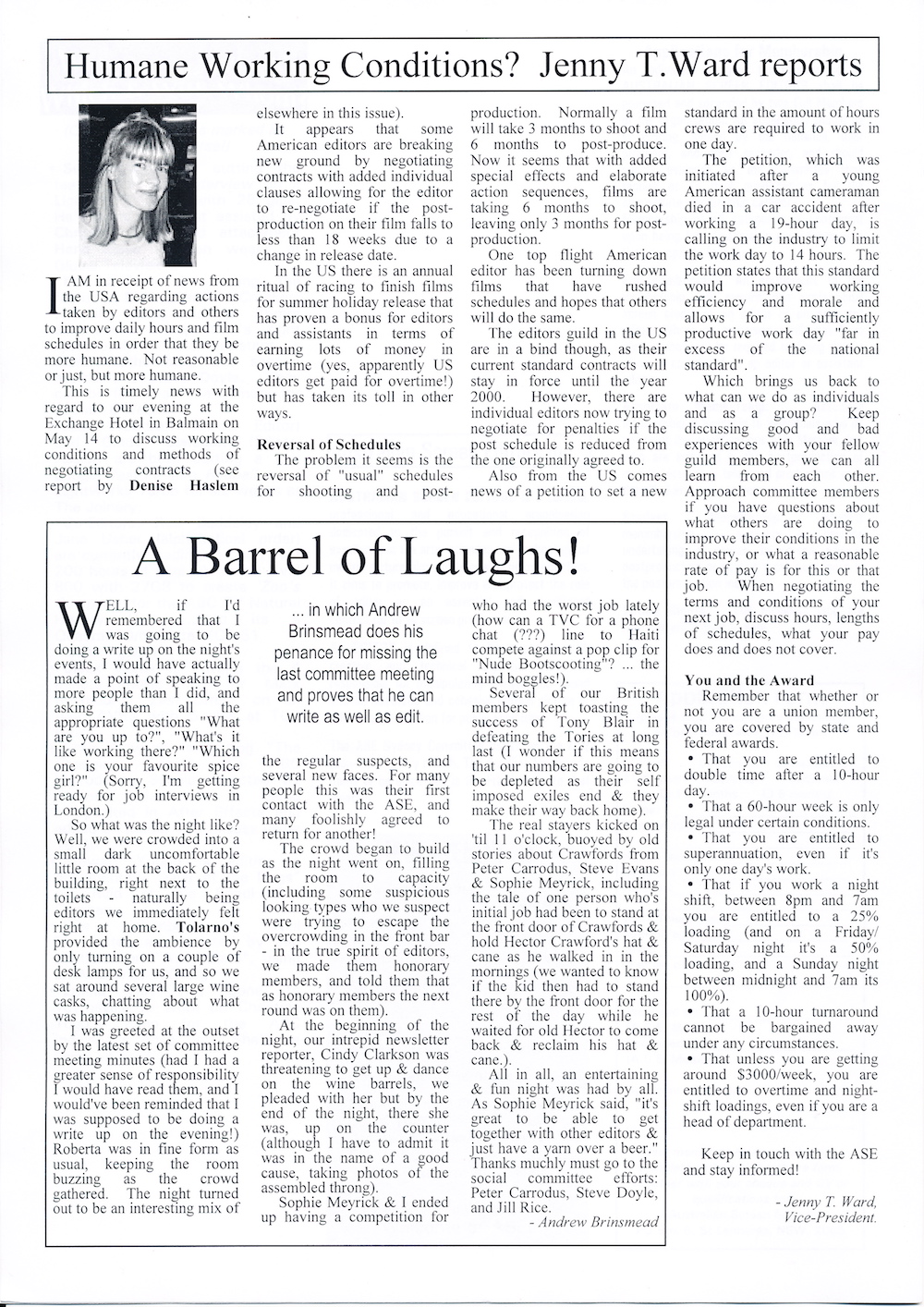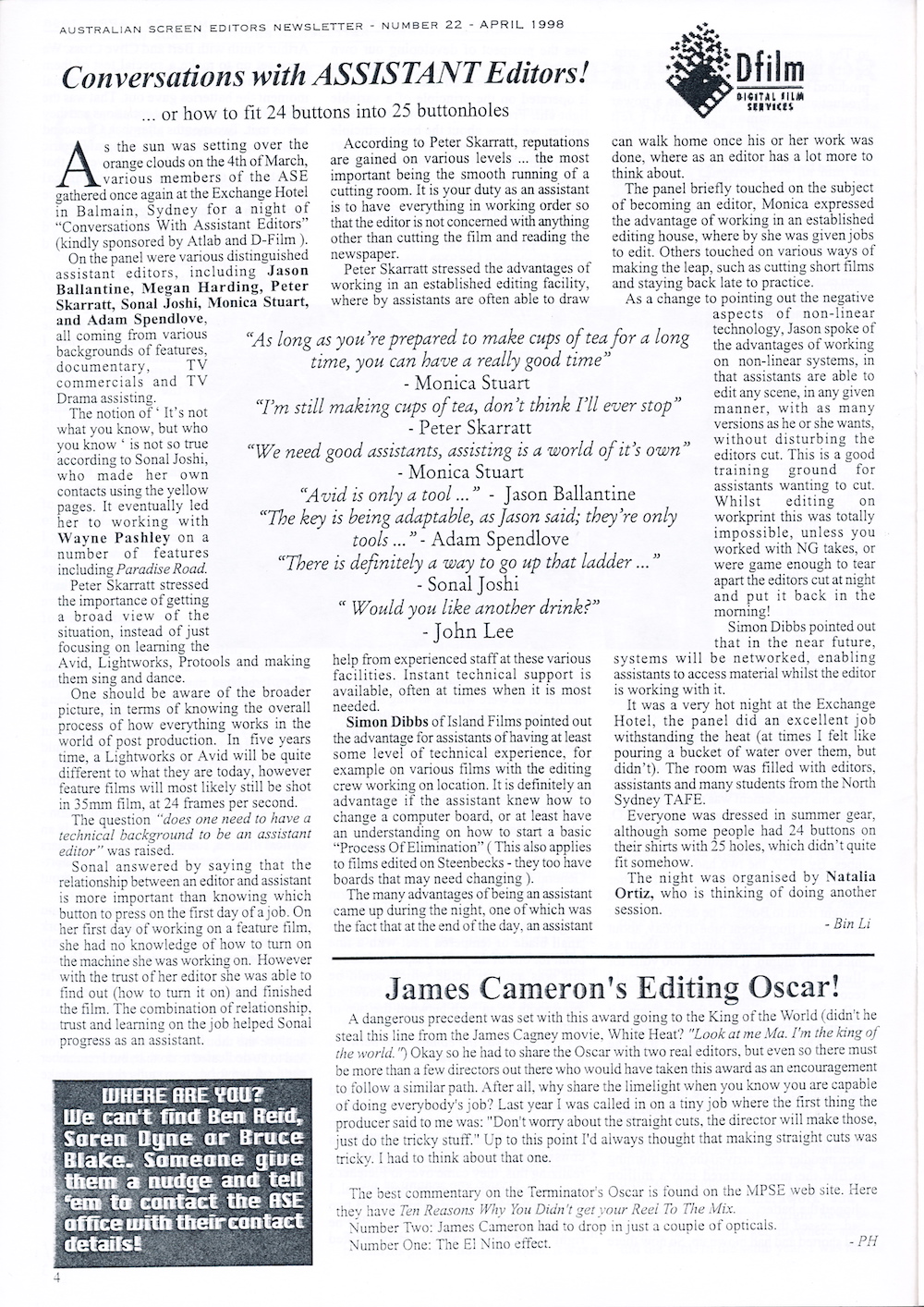Hi there, everyone,
While this is indeed the 100th edition of the ASE eNews, there were also 71 paper editions published between March 1996 and Winter 2008. At some stage, the newsletter went from monthly to quarterly, I suspect because it would have been a huge amount of work writing and sourcing content, formatting, photocopying, putting into addressed envelopes and then mailing them out! When I joined the Executive Committee, I was given the job of finding contributors for the Meet the Member and Meet the Committee profiles. This was something of a struggle every month, and I remember marvelling at how the lovely Shannon Longville managed to put out an entire eNews every month. When Shannon stepped aside, I took up the job on the condition that the newsletter would become bimonthly - one of my better ideas!
The wonderful Margaret Slarke has of course archived all the paper editions - 1 to 71. Some of those have been scanned and uploaded to the website. (Hmm, maybe a fun job for someone with a scanner and a lot of patience.) The website eNews archive starts at eNews 10. (I assume the internet ate editions 1-9.) So it looks like this is the 171st newsletter. The website also has two news updates from Film Editors Guild Australia from January and November 1971 which were published in 'Script, Screen and Art' magazine and 'Lumiere Magazine' consecutively.
I've uploaded scans of the first and last paper editions to the eNews section of the website where you can also find the rest of the uploaded newsletters - electronic and paper.
https://www.screeneditors.com.au/news-events/ase-enews/
I've asked some of the newsletter wranglers from over the years for any war stories, favourite editions or memories they might have. These are published below.
I am going to steal something from the very first article in the very first newsletter as it's still as true today as it was then. I suspect this was written by Matthew Tucker.
"Filling up these pages with enough interesting information to make a useful newsletter each month will be hard work - and that's where you come in! If you have anything to contribute, be it an article you have written, a newsclipping we might have missed, an editing-room hint, or amusing anecdote (I'm sure there are hundreds out there), please don't hesitate to share it with us.
Any input is most appreciated!"
(I'll stop there as it goes on to ask for contributions to be sent in on floppy disc or as ASCII text.)
The ASE eNews is for, by and about Members of the guild - and that means YOU! Please don't feel you need to be asked to contribute to the eNews, just send stuff in - news, articles, anecdotes, tips, trivia, letters to the editor, photos, cartoons, etc, Meet the Member, Meet the Committee, Meet the ASE. Any time is OK - there's always another eNews. We have no way of keeping track of what everyone is up to but we would like to know. newsletter@screeneditors.com.au is the email to use.
(PS - this also goes for the banners on the ASE website homepage. If your work has been released recently, send in a banner for the website - anything from feature films to open content. Send a 968x400 jpeg to newsletter@screeneditors.com.au)
Let us help celebrate your work!
Thank you to all the wonderful contributors over the years. And a special thanks to our committee members who all know that organising an event also involves doing the write-up for the eNews.
Cheers,
Alison Myers
Executive Committee Member
Matthew Tucker
In 1996 when a dozen Editors came together one evening to develop and launch the "new" ASE, we discussed what members would get for their membership fee.
I thought it was very important that each paying member receive in their letterbox a regular update from the committee, to show what progress was being made, what was happening in the industry, and what we were doing for the membership. I had the resources to compile a short newsletter, using a no-name PC with a massive 16 Mb ram, 80 Megabytes disk storage and Film Australia's photocopier. The first newsletter I think was was only four A4 pages but subsequent ones ran to up to 16 pages. In those days it was quite a manual process, even some scissors cut-and-paste as image editing was limited in MS Word. I could do some fancy fonts and a bit of Word Art but that was it.
I tried to include plenty of technical articles, a message from the president, a bit of editorial comment, something amusing, something historical ... and we listed new members on the back page. At one point we were given a bunch of old newsletters from the our predecessor, the defunct FEGA (Film Editors Guild or Australia) and I combed through these for interesting content, and included reprints of interesting material. Later, when I started to put the newsletter articles online, I was more systematic in scanning and uploading these articles for posterity.
The pages were photocopied, then a few of the committee would take turns to get together every month for a "folding night" with a bottle of wine or two to lay out all the piles of printed pages on a table and put them in order, staple the corners and fold into three. Then we stuffed the envelopes, at least a hundred of them, and added the address stickers from the membership database. Then someone would go down to the post office with a large cardboard box and post the lot of them. We sent newsletters to members but also industry "elders" to encourage membership and also to post-production houses and sponsors.
I resisted the call to stop the printed newsletter and just "go online" for as long as I was editing the thing. It was inevitable I suppose, less costly certainly, but I felt that there was real value in receiving something via post that members could look forward to, open at the breakfast table, read in bed, stick to the fridge etc. We didn't have smart phones in the early days!
I'm doing a completely different line of work now, but I'm still an Editor at heart, and really glad the ASE has continued a regular communication with its members via newsletter and the web. Well done to all who have kept all the balls rolling!

(From Newsletter #1, March 1996)
Henry Dangar ASE
Congratulations on the 100th e-edition. The newsletter is a testament to the strength of the guild. It has never missed a beat since the first paper addition hit the streets in March 1996.
Mathew Tucker was the first editor who bought us the news and added so much to the face of the ASE. He was an editor with a cheeky and effective sense of humour. No words were ever wasted.
In those by gone days it was always an effort to get the most recent edition out to the readership. Long nights were spent by members of the committee stuffing and addressing envelopes.
I’ve included a piece from issue 4, the author of which we will never know. It speaks for itself.
Cindy Clarkson
What do I remember of the flurry of the Victorian ASE branch’s foundation? A lot of enthusiasm born from the need to connect with fellow creators, established and up and coming, as the new form of editing roiled down the mountain like a vast invading horde of barbarians. Non. Linear. Editing.
In the mid-'90s the Australian post-production industry convulsed and heaved with the disruption of the new technology with good reason. Creativity was under attack. Jobs were being redefined without a by-your-leave.
The newsletter was a way to communicate and celebrate all things editing while informing the film industry as a whole the post-production community was large, actively adapting to the technology shifts, creative and passionate about their craft.
With the masterful Matthew Tucker patiently helming editorial in NSW, I had the freedom of just writing articles. The newsletter allowed me to connect with a wide variety of talented people who shared a common passion. Post. In particular editing. I enjoyed sharing information – a surprising amount of technical items at the beginning; taking photos; asking questions about the craft, writing about all the wondrous things I’d seen and heard plus generally having some fun.
It’s too long ago to remember particular moments. I pulled out my copies of the ASE newsletter to see if any highlight would jump out of their trim bins. Nothing flickered. What I saw, besides a lot of incredibly young faces, was the celebration of our craft. What I remember is generosity and good humour of the volunteers who worked on the committee, the panellists who compiled clips and information for their event, the post facilities who donated venues, the sponsors who provided refreshments or prizes.
All the while the rage bubbled underneath. You only have to look at the early editions to see the advocacy for our craft.
The newsletter was and remains an important format to connect, inform and celebrate editing as we work siloed from fellow creatives.
Words have power.
Anna Craney
Looking back on the session that I wrote about, the linking theme is technological change: moving from film to AVID (Alexandre de Franceschi on Jane Campion’s In The Cut) and then from AVID to FCP with Nick Meyers and Laura Zusters. I think the paper newsletter was quite popular: it was retained for a while even though most members could be contacted by email. When it was compiled and printed (by Margaret Slarke probably? our tireless secretary) a small team would gather to fold and stick it in envelopes with address labels that Margaret had printed out (always a tricky job!). TBH I was always pleased to see it in the letterbox with news and stories of other Editors.
The president at the time was a fan of online forums and for many years the ASE website had a “forum-style” format. It was very useful but quite technical looking. A sort of information database - and an ambitious undertaking.
Walter McIntosh
Rachel Walls and I received the baton of editing the ASE Newsletter from Paul Healy with issue #63 in 2004. It was a print newsletter which had layout designed by Sally Goodfellow, an Aussie graphic designer who was living in Switzerland. In those days of dial-up internet, it felt quite novel to be collaborating with someone on the other side of the world – something that is now commonplace on projects for many of us.
The articles featured discussions of editors reporting on their recent work, training opportunities, wages and conditions, and of course the annual Accreditation event – which was held separately from the Christmas party. 2007 saw the advent of the Elephant Awards, which soon became known as the ‘Ellies’. Back then the newsletter featured frequent contributions from Rachel Walls, who test-drove new editing and graphics software, and Dominic Case, who answered questions about technical aspects of film and video post. Despite being heavy on technical detail, the columns from Rachel and Dominic were written with an entertaining and idiosyncratic style that made them a joy to read. There were also regular ‘Notes’ columns from the various state chapters and ‘In Memoriam’ tributes to much loved and respected members of the post-production community.
In 2008 the printed newsletter regenerated to become an email newsletter and Rachel and I passed it into Chris Mill’s capable hands.
One particular item that makes me smile when looking back at these printed issues of the newsletter is the lyrics sung by Andrew Macneil ASE, when he received his ASE Accreditation in 2008. To the tune of ‘The Rainbow Connection’, as originally sung by Kermit the Frog, Andrew had added his own words, which he performed with Emma McCleave. Andrew’s adaption, for editors, of this classic song can be found below. To date, it’s been the only sung response to receiving ASE Accreditation.

(From Newsletter #71, Winter 2008)
A random selection of Newsletter pages from throughout the years.
(Newsletter #14, May 1997)
(Newsletter #12, March 1997. OK, the plan was to include articles from all different editions, but edition 12 is still sticky with glue and refused to go back into its plastic sleeve. While trying to gently rearrange the pages, I got to reading this, and how could I leave it out?)

